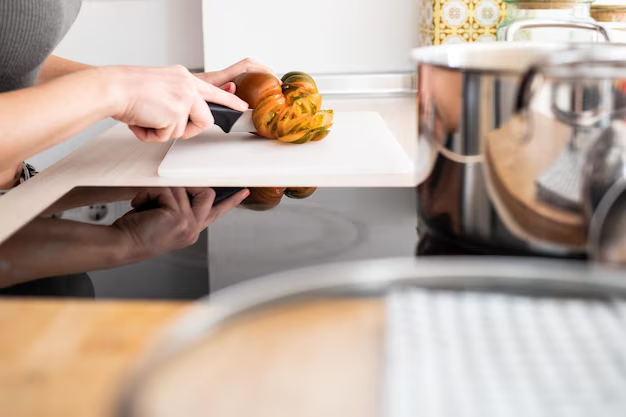Should You Put Hot Food in the Refrigerator? A Complete Guide to Keeping Your Meals Fresh
Storing food safely and efficiently is a practical concern that every home kitchen faces. Whether you're dealing with leftovers from a hearty meal or prepping in advance for the week ahead, the question arises: Should you put hot food in the refrigerator? Let's delve into this topic, exploring the best practices for food storage and other relevant considerations that can empower you with knowledge and peace of mind.
Understanding Food Safety and Temperature Dynamics
The primary concern when it comes to storing hot food is food safety. The zone between 40°F to 140°F (approximately 4°C to 60°C) is often referred to as the "danger zone" because bacteria can multiply rapidly within this temperature range. Reducing the time food spends in this zone is crucial for minimizing the risk of foodborne illnesses.
Why Temperature Matters
- Preventing Bacterial Growth: Hot food placed directly in the fridge can warm up the internal environment, affecting other stored items. This leads to changes in temperatures that may encourage bacterial growth.
- Maintaining Food Quality: Over time, fluctuating temperatures might alter the taste, texture, and quality of food.
By ensuring your food quickly moves through the danger zone, you can significantly reduce the likelihood of any microbiological growth.
The Myth: Letting Food Cool at Room Temperature
Common wisdom sometimes suggests waiting for food to cool to room temperature before refrigeration. However, this approach can be counterproductive if left unrevised:
- Timeline and Risks: Leaving food out for too long, typically over two hours, can allow harmful bacteria to thrive. It's a balance between cooling food enough to avoid altering refrigerator performance and keeping it safe from bacteria at room temperature.
Practical Steps for Cooling Food Safely
Portioning: Smaller is Better
Dividing large portions into smaller, shallower containers accelerates cooling. Thin layers enable more rapid heat dissipation, making it easier for food to cool quickly and evenly.
- Glass or Metal Containers: These materials conduct heat efficiently compared to plastic, hastening the cooling process.
Stirring and Ventilation
For soups, stews, and sauces, stirring while cooling increases air exposure, promoting faster heat escape. Cover containers loosely while cooling, allowing steam to vent while minimizing the risk of contaminants.
Ice Baths for Speed
For quicker temperature reduction, submerge the food container in an ice bath. Stirring intermittently in this setup can rapidly bring down the temperature.
FAQ: Can Hot Food Damage Your Fridge?
Impact on Refrigerator Functionality
Refrigerators operate on the principle of removing heat from their environment. Placing sizable amounts of hot food inside the fridge demands more energy for the cooling system, potentially altering the internal temperature of the refrigerator temporarily.
- Energy Efficiency: Consistently introducing large quantities of hot food may strain the appliance, thus impacting energy efficiency over time.
While occasional placement of hot food won't cause significant long-term damage, consistent practice can heighten energy consumption and operational wear.
Related Subtopics in Food Preservation
Preserving Taste and Texture
Beyond safety, proper storage preserves the sensory qualities of food. Here are tips that can help:
- Avoid Overcrowding: Allow air circulation around stored food to ensure consistency in cooling and taste retention.
- Use Airtight Containers: Prevent refrigerator odors from seeping into your leftovers and affecting their flavor.
Comprehensive Leftover Management
Taking control of how you manage leftovers not only saves money but time and effort, too:
❗ Tips for Effectively Managing Leftovers:
- Label with Dates: Using labels with storage dates ensures consumption in a timely manner, helping manage freshness.
- First In, First Out Method: Arrange items by date, keeping the oldest items easily accessible.
- Repurposing Ingredients: Transform leftovers into new meals—yesterday's roast veggies can top today's pizza!
Key Takeaways for Refrigeration Practices 🌟
- Cool Efficiently: Use shallower, smaller containers for rapid initial cooling before refrigeration.
- Avoid Overcrowding: Ensure air circulation for uniform cooling.
- Balance: Strike a middle ground between cooling at room temperature and quick refrigeration.
- Energy Awareness: Limit the frequent introduction of hot foods to avoid stressing the refrigerator.
Closing Insights
Navigating kitchen practices ties seamlessly with understanding how appliances and food safety intersect. Knowing whether to refrigerate hot food or allow it to cool impacts both food quality and appliance efficiency, emphasizing the importance of informed decisions in everyday cooking and meal management.
Ultimately, the best practices in refrigeration balance food safety and practical handling, keeping your meals enjoyable and your household efficient. By integrating these insights, you empower yourself to be a more knowledgeable and competent guardian of the food you prepare and consume. 🥗🥘
